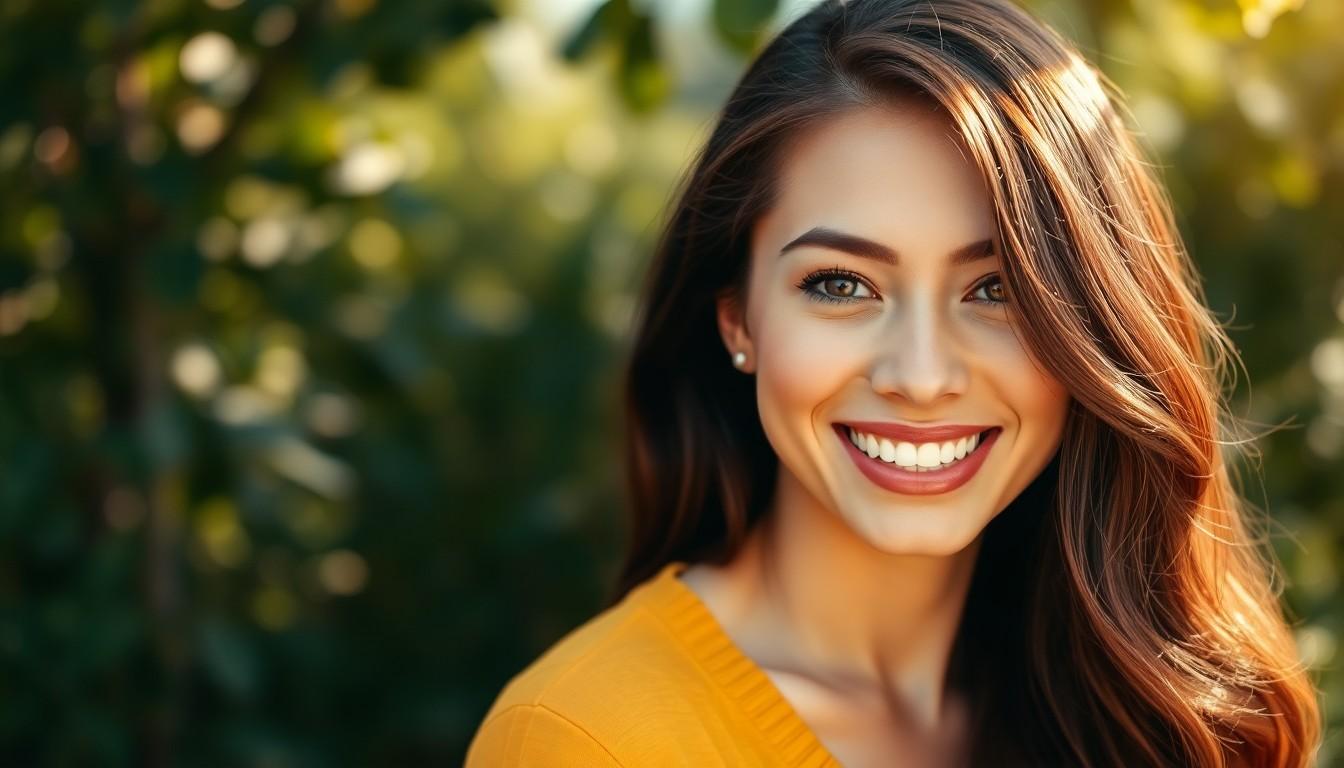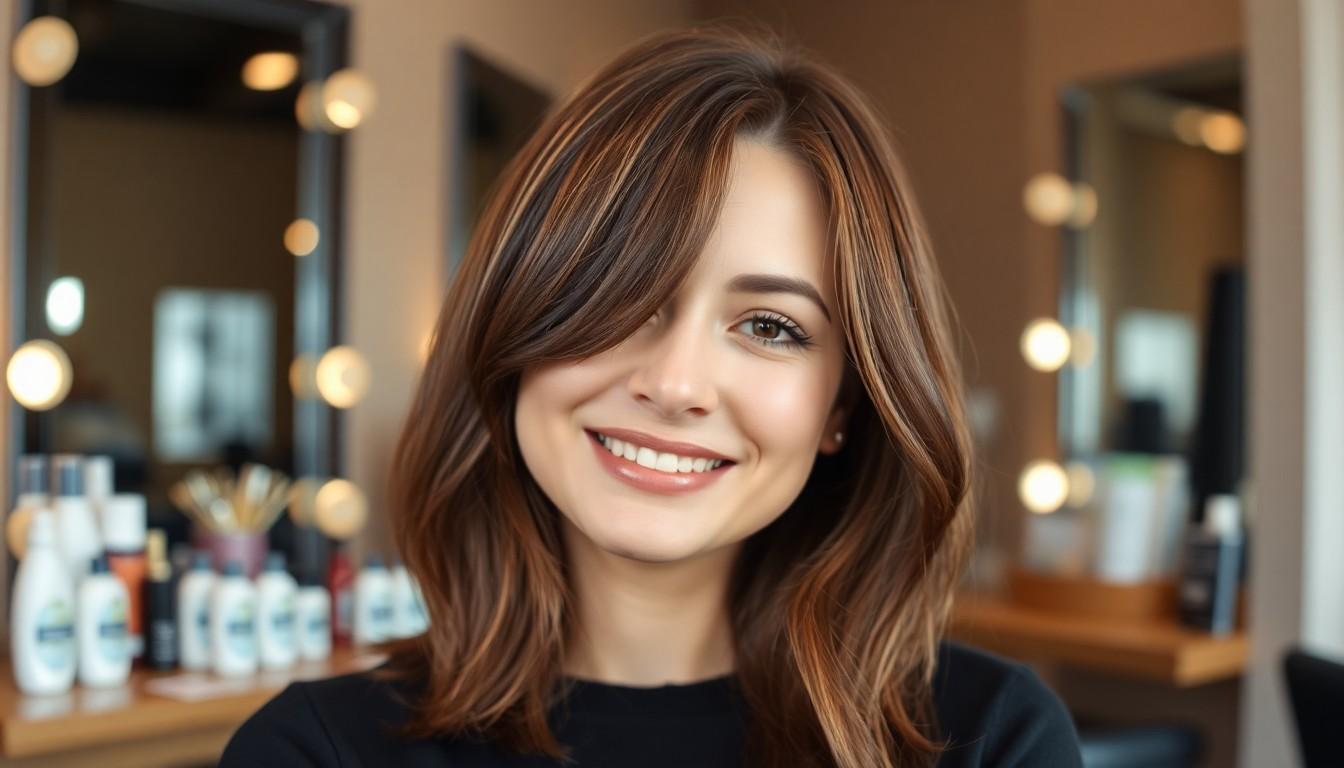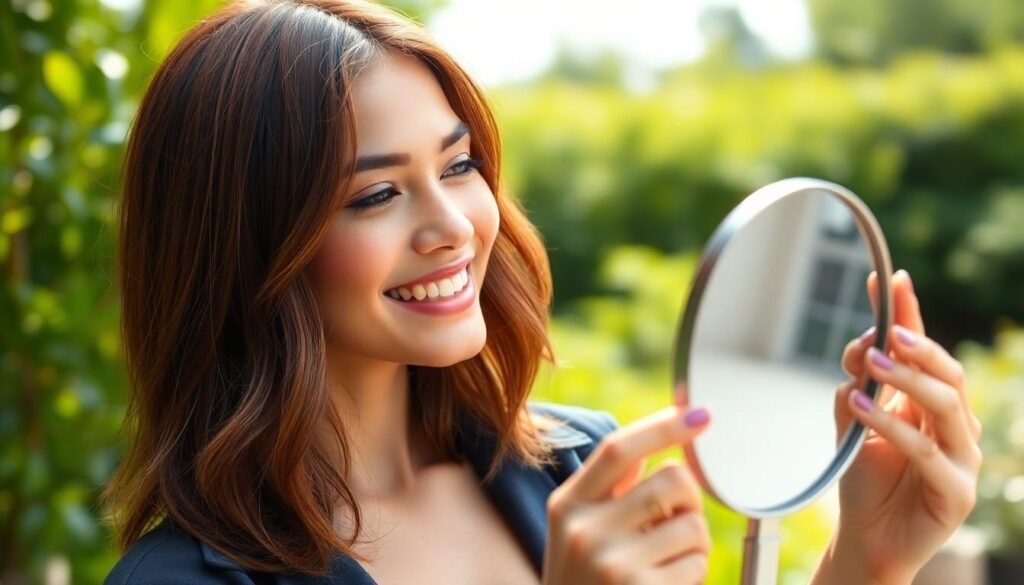Ever wondered why some hair colors make us glow while others leave us looking washed out? The secret isn’t just in the shade itself—it’s in how it plays with our unique skin tone and undertone. When we get this match right we unlock a look that feels natural, vibrant and totally us.
Choosing the perfect hair color doesn’t have to be a guessing game. With a little know-how we can highlight our features and boost our confidence every time we catch our reflection. Let’s jump into the essentials so we can find the shade that truly brings out our best.
Understanding Skin Tone And Undertone For Hair Color Choices
When we’re picking out a hair color, skin tone and undertone set the stage for finding flattering shades. Getting to know both helps us make confident, personalized choices that highlight our natural features.
Differentiating Skin Tone From Undertone
Skin tone shows on the surface as fair, medium, olive, or deep—it might change with the seasons or sun exposure. Undertone stays constant beneath, casting hues like cool (pink or blue), warm (yellow, peachy, or golden), or neutral (a balance). We often mix up the two, but knowing the difference means our color choice will look intentional and harmonious.
Identifying Your Skin Tone: Fair, Medium, Olive, Or Deep
We check our jawline in natural light to see our true skin shade. Fair tones stay light and burn easily, like Scarlett Johansson or Emma Stone. Medium complexions look soft beige or golden, as seen with Jennifer Aniston. Olive skin carries green or gray hints, similar to Salma Hayek. Deep skin reflects rich brown shades, much like Lupita Nyong’o or Viola Davis. Each tone shapes how hair colors stand out, so matching or contrasting well is key.
Discovering Your Undertone: Cool, Warm, Or Neutral
We look at our wrist veins—blue or purple means cool, green suggests warm, while a mix hints at neutral. Holding white fabric against the face can help—rosy skin needs cool shades, and golden skin loves warm ones. When we wear both gold and silver jewelry, whichever looks best shows off our undertone. These clues guide us toward hair color that brightens and balances our overall look.
Recognizing The Importance Of Choosing The Right Hair Color

Picking the right hair color does more than change our style—it can brighten our complexions and boost our confidence instantly. We find that matching hair color to our skin tone and undertone creates a seamless, glowing look that brings out our best features every single day.
Improving Natural Beauty With Suitable Shades
Every skin tone shines brightest with hair colors that echo its natural warmth or coolness. For cool undertones, shades like cool red, plum, or chestnut brown add vibrancy. Jewel-toned purples and icy blondes work wonders on deeper, cool-toned skin, making our features pop. Warm undertones usually look radiant with golden copper, rich mahogany, or honey browns. Lighter, warm undertones come alive with golden or mocha blondes and fiery red or violet shades for a playful contrast. When we identify as neutral, we enjoy the flexibility of both warm and cool hues—sticking with soft, balanced tones achieves the most harmonious effect.
Avoiding Common Hair Color Mistakes
We often see mismatched tones when warm skin tries icy hair colors or cool skin pairs with coppery shades. These combinations can actually dull our complexions or give an unhealthy cast rather than improving our natural color. Overly bold hues like blue or ash may look striking on the shelf but might make warm skin appear greenish or washed-out in real life. By skipping dimension—like forgetting customized highlights or lowlights—we also risk hair looking flat and skin losing its glow. Our best results always come from blending the right hair color with our undertone and thoughtfully adding layers of color that suit us perfectly.
Determining Your Skin Tone And Undertone: Step-By-Step Guide

When we’re picking the perfect hair color, our skin tone and undertone always come first. Using a few at-home methods or getting a professional consultation lets us pinpoint what shades will naturally brighten our look.
Easy At-Home Tests For Finding Undertone
Let’s start by checking our veins in natural light. Seeing blue or purple veins means we likely have cool undertones. Noticing veins that look green or even a bit yellow? That means our undertones lean warm. If our veins don’t fit clearly in either category, there’s a good chance we fall into the neutral undertone group.
Trying on different jewelry gives us another clue. Wearing silver might make us look refreshed and vibrant if our undertones are cool. On the other hand, gold jewelry tends to enhance warm undertones, making our skin appear glowing and bright.
We should also pay attention to which clothing colors work best for us. Cool-based colors like pure blues, cool reds, and rich purples usually flatter cool undertones. Warm-based shades such as honey, golden, or peachy tones typically suit those of us with warm undertones.
Table: Quick At-Home Test Reference
| Test | Cool Undertone | Warm Undertone | Neutral Undertone |
|---|---|---|---|
| Vein Color | Blue or purple | Green or yellow | Mix of blue and green |
| Jewelry | Silver looks best | Gold looks best | Both look good |
| Clothing Colors | Blues, purples, cool reds | Honey, golden, peach | Most shades suit |
Consulting With Professionals For Accurate Assessment
Stopping by a salon helps us get an expert’s perspective. Professional hairstylists often look at our skin in different lighting and consider our natural hair color to determine the best match. With their trained eyes, they can suggest a range of hair colors that pair perfectly with our unique skin tone and undertone.
Many salons offer in-depth color analysis sessions. These involve personalized techniques and tools that make it easier for us to find hair colors that highlight our features and natural complexion. Choosing to consult a professional gives us the confidence that our new shade will truly complement our appearance.
Exploring Best Hair Colors For Cool Undertones

When we want our hair color to really flatter our cool undertones, it’s all about choosing cool, ashy, or jewel-toned shades. Let’s look at what works best for fair, medium and deep cool skin, and also point out a few colors we should skip.
Recommended Hair Colors For Fair Cool Skin
Icy and platinum blondes look amazing with fair cool skin since they highlight our pink or blue undertones. Cool reds such as plum or burgundy also add beautiful contrast without overpowering our natural look. Adding cool chestnut brown or peanut butter blonde highlights can keep things natural while still giving our hair dimension.
Ideal Shades For Medium And Deep Cool Undertones
Cool red, plum, and burgundy shades consistently complement medium cool skin by echoing red and blue skin notes. Chestnut brown and peanut butter blonde, with cooler highlights or lowlights, help add depth and avoid any washed-out effect. Deep cool skin pops with bolder hair choices—think jewel-toned purples, navy, icy blondes, or rich burgundy. We see these shades bring out our skin’s natural vibrance and keep everything looking balanced.
Hair Colors To Avoid With Cool Undertones
Warm, golden, or yellow-based hair colors are best left out for us. Golden copper, rich red mahogany, mocha brown, and golden blonde just don’t play well with our cool undertones—they can make our skin look green or gray. Steering clear of these keeps our complexion clear and bright.
Selecting Hair Colors For Warm Undertones

When we pick hair colors for warm undertones, we want shades that light up our complexion and truly bring out the golden or peachy glow in our skin. Choosing the right match means going for rich, radiant colors that play nicely with our natural warmth.
Best Choices For Fair Warm Skin
Chocolate and honey brown work wonders on fair warm skin because these earthy hues boost that sun-kissed vibe we love. Golden and honey blondes also give our look extra warmth—they blend golden and caramel tones to create a bright, glowing effect. Mahogany and mocha brown add just enough richness for subtle depth without overpowering fair warmth. Copper and strawberry blonde each offer a unique twist—copper brings vibrant energy, while strawberry blonde blends gold and red to gently enhance pink undertones.
Flattering Hues For Medium And Deep Warm Undertones
Deep browns like chestnut and mocha brown suit medium or deeper warm skin, letting the natural warmth shine through. Golden highlights can go with almost any base color and instantly add dimension that flatters our undertone. Mahogany and copper shades deliver bold, radiant results—they work especially well to intensify our glow for deeper skin tones. Caramel brown creates that seamless, warm effect while keeping everything rich and cohesive.
Shades To Steer Clear Of With Warm Undertones
Icy or ashy tones such as silver, platinum, and blue-black never do us any favors; those shades can wash out warm skin and leave it looking dull. Cool hair colors that miss the red, orange, or gold pigments simply don’t enhance our natural glow, so we skip those to keep our complexion looking healthy and vibrant. Avoiding these cooler options means we always play up the best of our warm undertones.
Opting For Hair Colors That Complement Neutral Undertones

Neutral undertones give us so much flexibility when picking hair color. We’re lucky to pull off both warm and cool shades without clashing with our skin.
Universal Colors For Any Skin Tone
Balanced browns sit at the top of our recommendations for anyone with a neutral undertone. We find chestnut brown or a classic medium brown can look amazing, never too warm or too ashy. For those wanting a lighter vibe, subtle blondes in light to medium ranges work wonders, especially when we add gentle highlights. These options stay natural and flattering, keeping us from ever looking washed out.
| Hair Color Option | Works Well On | Example Shades |
|---|---|---|
| Balanced Browns | Nearly all skin types | Chestnut brown, medium brown |
| Subtle Blondes | Fair to medium, neutral skin | Light blonde, soft golden blonde |
Highlights And Lowlights For Extra Dimension
We love experimenting with highlights and lowlights to change things up. Adding dimension helps our hair pop and avoids flat, single-tone color. Cool-toned highlights or ashy lowlights add brightness for those who want a bit of edge, while warm golden or caramel accents bring extra warmth. No matter what we pick, blending both cool and warm accents gives our hair a rich, multidimensional look that complements our neutral undertones perfectly.
Considering Seasonal Skin Tone Analysis For Hair Color Selection

Looking for a custom hair color that elevates your whole look? Seasonal skin tone analysis lets us pinpoint options that perfectly complement our undertones, so our hair truly pops.
Winter, Spring, Summer, And Autumn Palettes
We find that the seasonal palette method organizes everyone into Winter, Spring, Summer, or Autumn. Winter skin tones usually feature cool undertones and porcelain or pale complexions. Jewel-toned shades like icy blonde, plum, and rich burgundy work magic here, as they amplify those blue and red undertones we want to highlight.
Spring brings warm undertones and bright, clear skin. Golden hues like honey blonde, copper, and mahogany look stunning, while mocha brown with gold reflects give extra vibrance. Cheerful shades add nice contrast without overpowering Spring’s lightness.
Summer covers cool undertones with a softer touch. Cool reds, chestnut brown, and subtle peanut butter blonde all sit well with Summer’s medium or fair complexion. Sticking with these gentler, natural tones means our skin keeps its healthy glow, avoiding any sallow effect.
Autumn palettes take on warm undertones and range from medium to deep skin. Earthy choices like honey-brown, caramel, and golden brunette enhance our golden undertones. If our hair’s already dark, balayage or ombre in these tones brings lush dimension.
How Seasonal Analysis Influences Hair Color Choice
We see seasonal analysis as a tool that protects us from color clashes. Matching cool palettes with cool skin and warm shades with warm skin avoids unnatural or washed-out results. Looking at undertones guides us toward colors that actually make our skin appear brighter and healthier.
Each season’s colors strengthen our skin’s best features. For example, cool reds or blues sharpen a Winter undertone, while golds and coppers warm up those Autumn vibes. Customizing our color in this way ensures we get harmony, not contrast, from root to tip.
Instead of guessing and checking dozens of boxes, this method shortlists the options most likely to succeed. It’s all about improving what’s naturally ours while skipping shades that might leave us looking off or uneven. Season-based analysis means our hair always looks intentional, never accidental.
Combining Personal Style With Expert Hair Color Advice

We all want hair color that feels like us, suits our features, and works with our every day. Let’s see how thinking about our eyes, lifestyle, and working with a pro can help us get there.
Factoring In Eye Color And Lifestyle
Our eye color does a lot to influence the shades that look best. Cool skin with blue or green eyes pops with cool red, plum, or burgundy, while chestnut brown or peanut butter blonde can offer a soft, natural contrast. Those of us with warm skin and brown or hazel eyes shine in rich brunettes like espresso or chestnut, and golden or copper hues add extra glow.
Lifestyle absolutely matters when we pick a color. If we’re busy or prefer minimal fuss, choosing a shade close to our natural color means fewer touch-ups. Bold or trendy colors look playful but usually need more salon visits. For anyone working in creative fields, vivid shades might fit right in. Those with more formal work environments may want to consider classic colors that don’t stand out too much.
Working With Your Stylist For The Perfect Shade
Bringing these ideas to the salon makes a huge difference. Being honest with our stylist about how much time we want to spend on hair care or what look we’re hoping for helps them recommend options that tick all our boxes. Discussing our skin undertone and eye color can guide the stylist toward tones that naturally flatter us.
Personalization is key—stylists often suggest adding highlights or lowlights to bring dimension and suit our undertone. When we’re uncertain or considering a dramatic switch, asking for a temporary or demi-permanent trial gives us time to adjust before committing to something long term. Trusting our stylist’s expertise means we benefit from their eye for detail and their knowledge about trends, so our results feel polished and just like us.
Conclusion
Finding the right hair color is more than just following trends—it’s about celebrating what makes us unique. When we consider our skin tone, undertone, and personal style, we unlock a industry of shades that truly enhance our natural beauty.
Let’s remember that hair color is a form of self-expression. Whether we want a subtle change or a bold transformation, making informed choices helps us feel confident and radiant every day. Working with a professional can make the journey even more rewarding, ensuring our new look feels just right.
Frequently Asked Questions
How do I determine my skin tone and undertone for hair color?
To find your skin tone, observe your face and jawline in natural light. For undertone, check your wrist veins—blue or purple means cool, green means warm, and a mix suggests neutral. You can also try silver or gold jewelry; silver flatters cool undertones, gold suits warm. If unsure, consult a professional stylist for an accurate assessment.
Why is matching hair color to my skin undertone important?
Matching your hair color to your skin’s undertone ensures the color complements your complexion, highlighting your features and giving a vibrant, natural look. The wrong shade can make your skin appear dull or washed out, while the right one enhances your overall appearance and boosts confidence.
What hair colors are best for cool undertones?
Cool undertones look great with hair colors like icy or platinum blondes, cool reds (plum, burgundy), and jewel-toned shades. Ashy browns and deep, rich shades with blue or violet undertones are also flattering. Avoid warm, golden, or yellow-based colors that can clash with your natural coolness.
Which hair colors suit warm undertones?
Warm undertones are complemented by rich, golden shades such as honey blonde, chocolate brown, copper, and caramel. Deep browns like chestnut and mocha, as well as golden highlights, add dimension and enhance your skin’s natural warmth. Avoid icy or ashy tones that can wash out warm complexions.
What hair colors work best for neutral undertones?
Neutral undertones are versatile and can wear both warm and cool hair shades. Balanced browns (like chestnut), medium browns, and subtle blondes look flattering. Mixing cool and warm highlights or lowlights can also create a multidimensional, natural-looking result perfect for neutral skin.
How does seasonal color analysis help choose a hair color?
Seasonal color analysis groups people into Winter, Spring, Summer, or Autumn palettes, based on undertones and natural coloring. Each season has recommended hair colors that enhance your look—such as jewel tones for Winter or warm golds for Spring. This method helps avoid color clashes and creates a harmonious appearance.
Can my eye color affect which hair shade looks best?
Yes, eye color can influence the hair shades that suit you best. Cool-toned eyes (blue, gray, cool green) usually pair well with ashy or cool colors, while warm-toned eyes (amber, brown, hazel) shine with golden, brown, or copper shades. Matching hair color to both your eyes and undertone creates a cohesive look.
Should I consult a stylist before choosing a new hair color?
Yes, consulting a stylist is recommended. Professional colorists can assess your skin tone and undertone, suggest shades that complement your unique features, and create personalized color blends with highlights or lowlights. They can also guide you through the maintenance and transition process for a smooth color change.
How can I avoid common hair color mistakes?
To avoid mistakes, always match hair color to your undertones, avoid dramatic changes without expert help, and consider lifestyle factors like maintenance and workplace dress codes. Start with subtle highlights or lowlights if unsure. When in doubt, seek advice from a professional stylist to ensure a flattering result.
Are there easy at-home tests to identify my undertone?
Yes, you can check your undertone by looking at your wrist veins (blue/purple for cool, green for warm, both for neutral) and by trying on silver versus gold jewelry to see which looks better. Natural light is best for these tests. If you’re still unsure, consult with a professional stylist.







